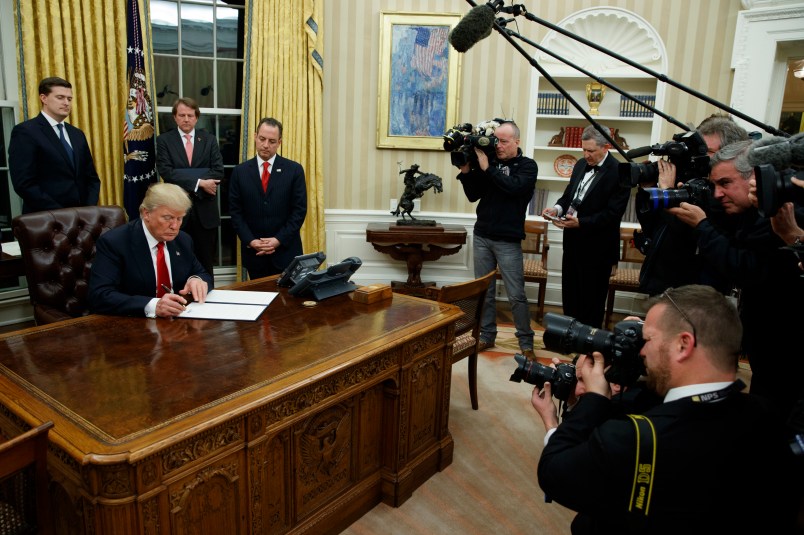Is history repeating itself? With Donald Trump’s executive order to agencies to waive or delay any part of the Affordable Care Act that imposes a financial or regulatory burden, Obamacare’s days appear numbered. The administration has begun a process that could lead to the disintegration of the exchanges even before Congress gets around to repealing the act, and well before it creates a viable replacement. Something very similar happened in Australia forty years ago — and the results were not good for the conservatives who eliminated their national health system.
Under a Labor government, Australia passed a national health insurance system called Medibank in 1974 that was similar to America’s Medicare system, but applied to all Australians. Liberals (who in Australia are the “conservatives”) used their majorities in Australia’s upper house and in the state legislatures to undermine the system — refusing, among other things, to levy a tax to support its subsidies for care. Australia’s doctors, with Liberal support, jacked up their rates well above what Medibank was willing to pay. In 1981, a Liberal government, having taken power, repealed the legislation, which didn’t seem to be working. But the story doesn’t end there.
With no protection against rising healthcare costs, the public turned against the Liberals, and in 1983 voted in a Labor government nationally and in four of the six states, which reintroduced a new stronger healthcare bill, dubbed Medicare, which was funded through its own tax. It is popular and remains in place, although government has changed hands several times since then.
In the United States, support for national health insurance has remained very high during its absence — helping Democrats win the White House in 1992 and 2008 — and has fallen when an administration proposed an actual system, as the Clinton administration did in 1993, or when an actual system was adopted, as the ACA was in 2010. If the Republicans gut the ACA, support for national health insurance will revive. You can bet on it. And Democrats may even get a chance in 2020 to implement a new system as the Australian Labor Party did.
But this time they better do it right. Obamacare, like Clinton’s earlier proposal, required a post-graduate degree in medical economics to comprehend. It was far too complex. It had too many layers of coverage. It appeared to be financed at the expense of Medicare. It invited the perception that people who already had insurance were being forced to subsidize with higher premiums those who did not.
As many a healthcare expert has written over the last fifty years, a viable system needs to separate insurance from employment and create one unified system. It doesn’t have to eliminate private insurance. The Swiss have a national system in which every citizen has to purchase the same policy from a non-profit private insurance company, where citizens pay premiums, and deductibles, but where citizens do not pay beyond a fixed percentage of their income.
Democrats in America may get a chance to improve Obamacare — and who knows, miracles have happened, Trump may even make good on his promise to provide cheaper and better insurance for all. But that doesn’t seem likely. If history does repeat itself, and Trump and the Republicans gut national health insurance, the Democrats better be ready this time with a proposal that will endure, even if it takes a longer and acrimonious battle to get it enacted..






